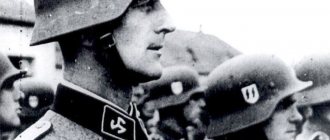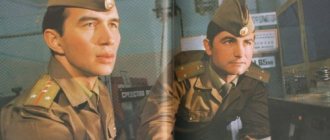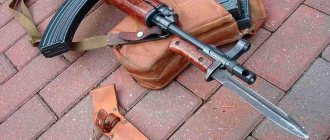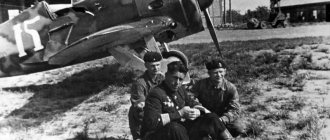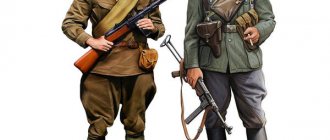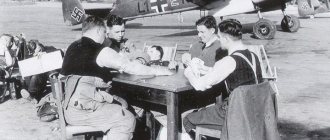What is our life? A game!
Ivan the Terrible, being one of the most controversial Russian tsars, amazed his contemporaries not only with his methods of governing the state, but also with his hobbies. It is known that the sovereign was seriously interested in astrology, compiled maps of the starry sky and believed that the heavenly bodies were capable of predicting a person’s fate. Another activity that brought genuine joy to the king was playing chess.
The death of Ivan the Terrible at chess. Artist Petr Tsepalin - Source: pinterest.ru
It is curious that back in the first half of the 16th century they tried to ban chess in Rus', and the associates of Ivan IV, Metropolitan Macarius and the author of Domostroi, Archpriest Sylvester, advocated for this. The latter dubbed the game “demonic” entertainment and sent curses on everyone who sat down at the chessboard at least once in their life. However, even the threats of his confessor did not stop Ivan Vasilyevich. The Tsar not only enjoyed playing chess himself, but also invited the main guardsman, Malyuta Skuratov, as well as Ivan Glinsky and Boris Godunov, who, however, could not surpass Ivan the Terrible in such an intellectual game, to share the game with him.
According to one version of the death of Ivan IV, the autocrat died playing chess. According to the Englishman Horsey, who left memories of Muscovy, on that fateful day of March 28, 1584, Ivan Vasilyevich could not place the king’s piece on the board - it kept falling. When the king completely lost consciousness, the remaining figures fell to the floor with a roar. Isn't this an omen of the Time of Troubles?
Clear falcons of the Quiet King
Despite his entrenched nickname, Tsar Alexei Mikhailovich was a gambling man. Just look at his love for falconry, which was known far beyond the royal court even during the Tsar’s lifetime. The ruler himself characterized himself as a “reliable hunter,” that is, real, skillful and knowledgeable.
Falconry of Tsar Alexei Mikhailovich - Source: upload.wikimedia.org
The secretary of the Holstein embassy, Adam Olearius, who left notes on the Russian state of the 17th century, noted that the hunting birds were kept by Alexei’s “uncle,” boyar Boris Ivanovich Morozov. He instilled in his pupil a love of falconry. In addition, the young king understood that this hobby in the eyes of his subjects was traditional for the sovereign and worthy of his high title. True, in contrast to the more usual animal hunting, Alexey chose something more refined: here skill was determined not only by the trophies obtained, but also by the training of the bird of prey, the beauty and scope of its flight.
Education and training of birds, as well as the organization of falconry, cost the treasury 75 thousand rubles a year - an incredible amount at that time! No one except the Tsar himself could enter the territory of the falconry yards without special permission, and Alexei Mikhailovich transferred the management of the entire hunt to the jurisdiction of the Order of Secret Affairs. Often, by the will of the tsar, falconers went with an embassy to distant countries and presented gifts to foreign rulers: Russian birds were always highly valued, and losing a falcon was considered a terrible crime.
In Moscow, entire areas were dedicated to falconry. In addition to the most important one, rightly called Sokolniki, in the middle of the 17th century the Romanovs owned the villages of Pokrovskoye, Izmailovo, Semenovskoye and Cherkizovo. In 1661, Alexei Mikhailovich ordered the construction of another summer palace on the right bank of the Yauza. There was also a vast field for falconry, since the proud birds needed open space, and felt helpless in the forests.
It's not deserters who are heroes. German soldiers who defected to the Red Army in 1941
And the Red Army veterans, as one, expressed a common thought about disappointment in the German workers, who went to war against the state of workers and peasants. They were surprised: where did the millions of Germans who voted for Thälmann ?
History has shown that this happens periodically. The latest sad example is Ukraine. In such situations, millions cease to matter for some time, and only a few make history.
The most effective in the world. Truth and myths about the partisan movement of the USSR
©
RIA Novosti, Leonid Korobov / Go to photobank
In 1941 there were few of these in the Wehrmacht. But they were: for example, Fritz Schmenkel .
From the Wehrmacht to the partisans
In 1961, KGB investigators in the Kalinin (Tver) region of the RSFSR reported to Moscow that, during the investigation of Nazi crimes during the war, they had identified the commander of the partisan combat group that destroyed a detachment of traitor policemen. He turned out to be a German. But not a “Russian German” from the Volga region, but a citizen of the aggressor country, that is, the Third Reich.
This was no ordinary citizen - a corporal of the 186th Wehrmacht infantry regiment named Fritz Hans Werner Schmenkel . In November 1941, he deserted from his unit, hid with local residents, and then joined the “Death to Fascism” partisan detachment, fought in its ranks and accomplished many things that are usually called “feats.”
Judge for yourself. Fritz Schmenkel many times went to the location of Wehrmacht units, dressed in German uniforms, to conduct sabotage and reconnaissance operations. More than once he participated in battles with enemy units, including against tank units. The German, Soviet partisan, who was called Ivan Ivanovich in the detachment, lured a squad of policemen of 11 people into the forest, where the traitors were tried by a partisan tribunal.
He was a key figure in the group of saboteurs, without whom the operation to seize a German food convoy would have been unthinkable. Everything was organized as in Alexey German’s “Road Check.” The Wehrmacht command offered a reward for the capture of the traitor.
After the liberation of the Smolensk region, Fritz Shmenkel was awarded the Order of the Red Banner of Battle. And then, after retraining at the sabotage school of the command of the Western Front, they were thrown out with the divot detachment “Pole” in Belarus, where Shmenkel was captured.
© commons.wikimedia.org, Public domain Fritz Schmenkel / Go to photobank
He was executed on February 22, 1944 in Minsk. Before his death, he was allowed to write a letter to his family, in the Reich, where Fritz Schmenkel had a wife, Erna , and three children: Hans , Ursula and Christa . The letter contained bold lines: “Forgive me for the anxiety that I caused you by following the chosen path to the end. But I do not give up on my work even in the last hours of my life. I boldly face my execution, because I am dying for a good cause.”
Recognition and glory
Investigators explained the hero's motives by saying that he was a communist, and his father, also a communist, was killed during street battles with Nazi stormtroopers. The head of the KGB department for the Kalinin region, Colonel Mikhail Gorbatov, petitioned for the nomination of Fritz Shmenkel to the Golden Star of the Hero.
By the Decree of the Presidium of the Supreme Soviet of the USSR of October 6, 1964, “for active participation in the partisan movement, exemplary execution of combat missions of the command during the Great Patriotic War and the heroism and courage shown at the same time” to German citizen Shmenkel Fritz Paul (under this name Shmenkel was known in the Soviet historiography - Ed.) posthumously awarded the title of Hero of the Soviet Union.
The memory of Shmenkel was immortalized on an unheard of level. The award was presented personally to the wife of the German-Soviet partisan, Erna Shmenkel, by Leonid Ilyich Brezhnev . By order of the First Secretary of the Central Committee of the SED (Socialist Unity Party of Germany) Walter Ulbricht, a memorial stele in honor of Comrade Fritz decorated the building in Berlin, where on May 8, 1945 the act of unconditional surrender of the Reich was signed. In the GDR Air Force, the 1st Fighter Squadron Jagdfliegergeschwader bore his name. And at the suggestion of Comrade Ulbricht, one of the streets of the capital of the German Democratic Republic was named “Fritz Schmenkel Strasse”.
Was there Shmenkel?
This story is hard to believe today. It is difficult to imagine a Wehrmacht soldier who, during the triumphant advance of his army towards Moscow, when few doubted that the end of the Soviet Union had come, took and went over to the side of the almost defeated enemy. And not just any enemy: Corporal Shmenkel fled to the pitiful remnants of the defeated units of the Red Army and the local militia, who were hiding in the forests.
Ukrainian partisans and terrorists: who they really are
©
Security Service of Ukraine
Deserting to them, Fritz, like Bumbarash, found himself between two fires. They would hang him if they caught him. And the partisans would hang him, because he is not just an enemy, but also Fritz and Hans by name. Just a standard “fascist” from a propaganda leaflet.
The meaning of such an act defies explanation. The end of the Russian campaign from the point of view of the aggressor soldiers was close, as Corporal Shmenkel knew very well from conversations with his colleagues. The end of the campaign is the way home to family. But the mysterious corporal chose the forest and the fierce enemy partisans, who at first really almost put him against the wall.
But this is only a prologue to the riddle.
But there was another Germany
The legend about the partisan “Comrade Sh” is confirmed by the fact that, after all, Fritz Schmenkel was not the only phenomenon. His story is one of a number of others, and therefore typical. There were very few German defectors at the very beginning of the war, but they still existed. Just before the Reich’s invasion of the USSR, at least four Wehrmacht soldiers defected in just one day.
Six hours before the invasion, the most famous German defector, 30-year-old corporal of the 222nd regiment of the 75th Wehrmacht Infantry Division, Alfred Liskov . Like Shmenkel, a communist who went to the front with the intention of going over to the side of the USSR. Like Shmenkel, Liskov still had family in the Reich.
© russian7.ru Alfred Liskov / Go to photobank
Another typical example in this series is the act of a truly legendary person. On July 15, 1941, near the Belarusian city of Bobruisk, a soldier of the 134th Wehrmacht Infantry Division, Heinz Kessler, deserted during a combat patrol and went over to the enemy side. His story is exactly like the story of Fritz Schmenkel.
“I swam to the right bank of the Berezina and hid in some peasant house,” Kessler recalled. “I put my machine gun and backpack on the table and asked the woman to hide me. Then the Soviet comrades came - soldiers with four officers. They took me with them. Thus began my long trip to the east, during which my Soviet comrades said that until 1933 there was a strong communist party in Germany. And I told them that now the vast majority of Germans sincerely believe Nazi propaganda.”
Defectors of 1941. Who are they?
What was common in all cases of German soldiers crossing over to the side of the Red Army at the beginning of the war was that they were all in one way or another connected with the German communist movement. All of them were staunch anti-fascists. All of them were very highly motivated and went to the front with the intention of going over to the side of the USSR.
Until the moment of transition, their cases are similar. But after that, Shmenkel’s story diverges from the stories of Liskov, Kessler and other heroic defectors of 1941. It is atypical that the prisoner of war, whom the writer Boris Polevoy called “Comrade Sh,” was enrolled in a partisan unit, and was not evacuated to the “Mainland”, because all prisoners of war of the enemy army were subject to evacuation.
All the Germans, even those who voluntarily came over to our side, were sent to the rear; everyone had to sit in the camp for a long or short time. With only one exception: Alfred Liskov was taken from Lvov to Moscow, where he became a real star of Soviet propaganda. At the end of June 1941, Pravda and Izvestia wrote about him as a true communist-internationalist who committed an act worthy of an example for German soldiers.
Soon Liskov turned from the pages of leaflets to his former colleagues with an appeal to go over to the Soviet side. True, the image of the anti-fascist Liskov pleased only readers of the Soviet press: his leaflets were not successful in the Wehrmacht.
Walter Ulbricht's problems...
In August 1941, under the leadership of Comintern Secretary Dmitry Manuilsky , a special group was created to develop an anti-fascist movement among the prisoners of war available at that time. The task was set to get them to sign a paper condemning the Reich’s aggression against the USSR. As a result, out of 974 prisoners in one of the camps, only six put their signatures.
The future leader of the GDR, Bolshevik Walter Ulbricht, from the very beginning of the war, faced the difficulties of agitating captured soldiers of an army that was winning brilliant victories. Part of his work included sociological surveys of captured compatriots. And in the fall of 1941, Comrade Ulbricht had no positive reports.
“We raised the question with a number of soldiers that the defeat of the Reich and the overthrow of Hitler is the way to save the German people. Only a few communists agreed. Although at the first moment even they were surprised by this formulation of the question,” he wrote in one of his early reports.
© commons.wikimedia.org, Deutsche Fotothek Walter Ulbricht / Go to photobank
...and his successes
...This was when Hitler ordered the minting of commemorative award medals for the participants in the expected capture of Moscow, and the corporal of his army, Shmenkel, fled from the glory of the winner of the Bolsheviks and from the family waiting for him at home. When young Fritz, shivering from the cold, was hiding in the forests of the Smolensk region, former private of the 134th Wehrmacht division Heinz Kessler was sitting in a prisoner of war camp in Kazakhstan. It was when the defeat of the USSR seemed inevitable even to convinced communist defectors that Walter Ulbricht met Kessler during a visit to the camp.
Prisoner of war Kessler volunteered at the Anti-Fascist School, became an employee of the 7th department of GlavPUR (Main Political Directorate of the Soviet Army and Navy of the USSR. - Ed.), worked at the fronts, agitating German soldiers. He became a holder of the Order of the Red Star and the Order of the Patriotic War. He was a member of the Free Germany committee, where, after the defeat of the 6th Army at Stalingrad, a long line of German prisoners of war, led by Field Marshal Paulus, .
Germans in the Red Army
One and a half million Germans lived in the USSR. When the Reich attacked, they were taken into the army in very limited numbers and on a strictly individual basis. As a rule, these were communists who worked for GlavPUR.
Che Guevara and Ukrainian partisans
©
RIA Novosti, Max Alpert / Go to photobank
In August 1941, only 50 people were called up from the Volga German Autonomous Soviet Socialist Republic, and then only proven members of the All-Union Communist Party (Bolsheviks). True, there were Germans at the front who were drafted into the Red Army before the war. At the beginning of 1941, there were over 33.5 thousand people.
The first enemy strike was met by the defenders of the Brest Fortress - including the regiment commander Major Dulkait , Lieutenant Colonel of the medical service Kroll , Lieutenant Colonel Schmidt , Senior Lieutenant Wagenleitner , Sergeant Major Meyer , privates Küng , Killing , Miller and others.
At the beginning of the war, awards were rare and for special merits. But among those awarded were Senior Lieutenant Schwartz and Colonel Hagen . In 1945, Nikolai Aleksandrovich Gagen, already with the rank of lieutenant general, will take part in the Victory Parade on Red Square.
On August 24, 1941, when private Heinz Kessler, who had defected to ours, was en route to Kazakhstan, the Komsomolskaya Pravda newspaper, under the heading “We will avenge you, comrade!” told about the feat of the Red Army soldier Heinrich Hoffmann . The twenty-year-old young man, having been captured, did not betray his military oath. The newspaper published a large photograph of the burnt, blood-stained Komsomol card of Private Hoffmann.
And on August 28, Komsomolskaya Pravda talked about the feat of anti-aircraft gunner Heinrich Neumann , who shot down four Junkers bombers. Ironically, this article was published on the very day when the Decree of the Presidium of the Supreme Soviet of the USSR “On the resettlement of Germans living in the Volga region” was adopted. Most of the Germans were then withdrawn from the active army to the rear - with rare exceptions when a unit stood up for a colleague.
German partisans of the USSR
Even in the Reich, Hero of the Soviet Union Alexander German , the commander of a partisan brigade operating in the Leningrad and Kalinin regions, was called partisan No. 1. Asselborn , also fought there as a partisan . In 1943, the “encirclement”, Senior Lieutenant Robert Klein, . Dressed in the enemy's uniform, he prevented the bridge across the Dnieper from being blown up - for this he was awarded the Gold Star of the Hero. The Avangard partisan detachment operating in Odessa was led by the Germans Geft , Burzi and Berndt . They died in one of the heavy battles, covering the detachment’s exit from encirclement in Poland.
© RIA Novosti, RIA Novosti / Go to photobank
And here we can finally cast aside doubts that Fritz Schmenkel was a real person. Why wasn’t he taken to the rear as a prisoner of war? Why didn’t they use him for propaganda, but allowed him to participate in hostilities, although there was a danger that he might turn out to be a double agent? Finally, why did the command of the Red Army, after liberation, not leave Shmenkel in the rear to show him on newspaper pages, decorated with the Order of the Red Banner of Battle? But instead, he was thrown behind the Germans, near Orsha, with the risk that he could be captured and used by the enemy’s counter-propaganda, which ultimately happened. He was captured, although Goebbels’ .
Memory of the feat of “Comrade Sh”
There can be no doubt. Trustworthy Germans, who proved the truth of their motives by deed, real exploits and contribution to the Victory, were honored to receive weapons and fight on the side of the Red Army. Including the risk of being captured.
Fritz Schmenkel behaved with dignity in captivity. This is proven by the fact that he was sentenced not to hang, but to be shot, and he was also allowed to write his last letter home. Today, a plaque in memory of Fritz Shmenkel’s feat adorns the building on Freedom Square No. 4 in Minsk.
In Germany, the 1st Fighter Squadron of the GDR Air Force named after Schmenkel was disbanded in 1990. And Schmenkel Street in Berlin was renamed in 1992.
The fate of German heroic defectors in 1941
Alfred Liskov, whose head was turned by fame and Moscow, while working at Comintern, became conflicted and inadequate. He constantly exaggerated his role, criticized everyone and everything. Due to his dramatically changed behavior and obvious mental disorder, colleagues in his campaign work, including Georgiy Dimitrov . They even wrote denunciations.
Occupied Kyiv: the unsolved mysteries of the Soviet underground
©
deus1.com
Liskov was arrested but released “for health reasons.” His fate after the war is unknown.
Walter Ulbricht became head of the GDR. It was he who studied the KGB documents with the history of Fritz Schmenkel’s feat, he found his family, organized the ceremony of transferring the Gold Star of the Hero of the USSR and the Order of Lenin to the wife of “Comrade Sh” Erna and children: Hans, Ursula and Krista. Comrade Brezhnev personally presented the award. In 1971, Leonid Ilyich, during his first foreign visit as General Secretary to Berlin, convinced Comrade Ulbricht to cede leadership of the party and socialist Germany to Erich Honecker - “for health reasons.”
Heinz Kessler under Ulbricht became chief of the general staff of the GDR army and deputy commander of the Warsaw Pact forces. And under Honecker - the country's Minister of Defense. In 1989 he was transferred to the reserve. In 1993, he was tried and sentenced to seven and a half years in prison during the process of “decommunization.” Served five years, released “due to health reasons.”
To the end he remained faithful to the motive that pushed him in 1941 to go over to the side of the Red Army.
“For me, this was primarily a patriotic task,” he said in a recent interview.
Heinz Kessler died on May 2, 2022 in Berlin. He was the last hero defector of 1941.
Royal Doctor
Having visited European countries during the years of the Great Embassy, Peter I returned to his homeland not only with the desire to create a powerful fleet and radically change the life of his subjects, but also with a keen interest in medicine, especially dentistry.
Peter the Great performs tooth extraction - Source: vialdenta.ru
While in Holland, the king attended lectures on anatomy at the University of Leiden, learned to open abscesses, make surgical incisions and bandage wounds. According to the memoirs of contemporaries, Peter I eventually became so skillful in treating teeth that he tried to test the acquired skill on literally everyone - from courtiers to ordinary residents of the capital.
The sovereign even constantly carried with him two sets of instruments: a mathematical one and a surgical one with dental forceps. The Kunstkamera (the first museum founded by Peter the Great) still contains the “Register of Teeth,” which was removed personally by the Tsar. The number of “exhibits” exceeds 60 pieces!
Diagram of the Kunstkamera building - Source: upload.wikimedia.org
It is worth noting that before Peter, dentistry actually did not exist in the Russian state. There were only so-called dentists, specialists capable of removing teeth and placing primitive fillings. However, people did not trust them too much. The situation began to change when Peter the Great, seized by a new hobby, brought the Dutch doctor N.L. to Russia. Bidloo, who became the first head of the Moscow Hospital School. In 1718, the tsar opened an “instrument hut” for the manufacture of surgical instruments, including dental ones.
A soldier with the soul of an artist
It is known that the future Emperor Nicholas I was not prepared to rule the state - he was the youngest heir and, if not for the abdication of his brother Constantine in 1825, he would never have become a monarch. According to tradition, Nikolai Pavlovich received a military education, but there was a hobby in his life that, at first glance, had nothing to do with the army and navy.
Image of Nicholas I and Tsarevich Alexander Nikolaevich in the studio of the artist G. Villevalde - Source: hermitagemuseum.org
Since childhood, Nikolai loved to draw. First, he asked teachers to draw something on paper, and then he happily colored the drawing and gave it to someone close to him. At the age of seven, Nikolai Pavlovich began taking separate painting lessons, and his first teacher was the artist “on historical themes” I.A. Akimov, with whom the future ruler studied twice a week and made great progress.
Already in his mature years, Nicholas I will decide to master the art of engraving, and this time he will take lessons from O.A. Kiprensky (creator of the famous portrait of A.S. Pushkin). Having succeeded in this technique, Nikolai Pavlovich released a series of engravings “Uniforms of Russian troops”, carefully drawing out every detail of the military uniform: cuffs, collars, buttonholes. In addition, in 1829, the emperor created several watercolor works on the theme of the Italian Guard and pencil drawings depicting women in full cuirassier uniform.
Staff officer of the artillery team and sailor of the fin company of the Guards crew, 1844-1855. — Source: navyparade.mil.ru
One of Nicholas I’s favorite pastimes was creating sketches of uniforms for the Russian army with his own hands. The emperor's enthusiasm was so great that he could work on them day and night, refining and improving them. To do this, he even had to get acquainted with the basics of sewing and participate in the selection of fabrics and accessories for military uniforms. By the way, this hobby was also inherited by his son Alexander II, who made a significant contribution to changing the uniform of Russian soldiers and officers during the Great Reforms.
The case of Rüscher and Bormann: murders, robberies, torture, arson
How such a scheme worked can be seen in a memorandum from the head of the Smersh Counterintelligence Directorate of the Central Front, Major General Alexander Vadis, to the Front’s Military Council on working with prisoners of war of enemy troops, dated October 13, 1943. This document, declassified by the Central Archive of the FSB of Russia, was first published in 2008 in the multi-volume collection of documents “State Security Bodies of the USSR in the Great Patriotic War.”
“On September 17, 1943, among the prisoners of war located at the prisoner of war reception point at the intelligence department of the front headquarters,” Vadis reports, “two Sonderführers were identified:
Rüscher Kurt , born in 1905, native of the village of Borstedg, 20 km from Magdeburg, from peasant kulaks, German, secondary education, awarded the Cross “For Military Merit” 2nd class;
Bormann Nikolaus , born in 1907, native of the village of Rettmingen, Trier administrative district of the Rhine region, from peasant kulaks, German, educated in 8 classes of public school.”
Article on the topic
The last secret of the Reich.
Where did Martin Bormann disappear to? Counterintelligence “Smersh” had information indicating that the detainees had committed crimes: “Sonderführers Rüscher and Bormann , taken to the Burynsky district, were identified by local residents. The latter gave exhaustive testimony about the criminal activities of Rüscher and Bormann. In total, 15 witnesses were questioned in the case, including the former translator of the agricultural department of Ryushera F. Danilova-Waal , the former accountant of the Cherepovsky strong point Kovalev , the former head of the village.
Novo-Alexandrovka, Burynsky district Lifer and others. The investigation revealed that, being the heads of agriculture in the region, Ryusher and Borman, under the guise of planned agricultural supplies, carried out robbery of the local population, subjecting residents to unheard-of torture and abuse. During the German occupation, up to 2,000 people were shot and hanged in the Buryn region, and over 4,500 youth were forcibly sent into German slavery. During the same time, over 16,000 geese, 2,500 heads of cattle, 3,300 horses, 1,900 pigs and various agricultural products were transferred to German military units.
Photo: www.globallookpress.com
On September 2-4, 1943, during the retreat of German troops from the Buryn region, German soldiers, on the orders of Rüscher and Bormann, set fire to residential buildings and the newly harvested crops. In the village Cherepovka, Burynsky district, 434 residential buildings with all outbuildings were burned, in the village. Nikolaevka - 372 courtyards out of 380 courtyards in the village, in the village of Mikhailovka - 180 courtyards. In total, 2,140 residential households and about 48,000 centners of newly harvested crops were burned in the Burynsky district. Borman personally blew up in the village. Cherepovka 5 barns with grain and the house in which he lived.”
The collected materials were enough to decide the fate of the detainees: “Sonderführers Rüscher Kurt and Bormann Nikolaus were court-martialed and sentenced to death by hanging.”


